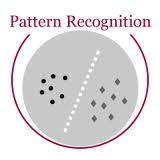
There exist many background subtraction algorithms to detect motion in videos. To help comparing them, datasets with ground-truth data such as CDNET or LASIESTA have been proposed. These datasets organize videos in categories that represent typical challenges for background subtraction. The evaluation procedure promoted by their authors consists in measuring performance indicators for each video separately and to average them hierarchically, within a category first, then between categories, a procedure which we name "summarization". While the summarization by averaging performance indicators is a valuable effort to standardize the evaluation procedure, it has no theoretical justification and it breaks the intrinsic relationships between summarized indicators. This leads to interpretation inconsistencies. In this paper, we present a theoretical approach to summarize the performances for multiple videos that preserves the relationships between performance indicators. In addition, we give formulas and an algorithm to calculate summarized performances. Finally, we showcase our observations on CDNET 2014.
翻译:存在许多背景减法算法来检测视频中的动作。 为了比较这些数据, 已经提出了数据集与DCDNET 或 LASIESTA 等地面真实数据。 这些数据集将视频分为代表背景减法的典型挑战类别。 作者所提倡的评价程序包括分别衡量每部视频的绩效指标, 并在分类中按等级进行平均, 首先在类别中先在类别中, 然后在类别中, 一种我们称之为“ 概括” 的程序。 虽然通过平均性能指标进行汇总是标准化评价程序的宝贵努力, 但是它没有理论上的理由, 它打破了所总结的指标之间的内在关系。 这导致了解释上的不一致。 在本文中, 我们提出了一个理论方法, 总结保护性能指标之间关系的多部视频的性能。 此外, 我们给出公式和算法来计算所总结的性能。 最后, 我们在CDNET 2014 上展示了我们的观点 。


